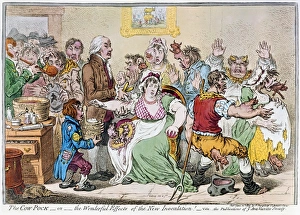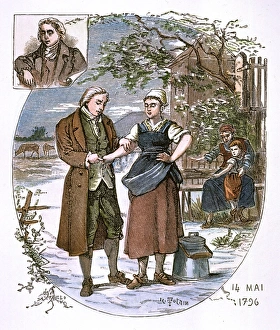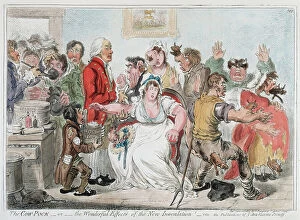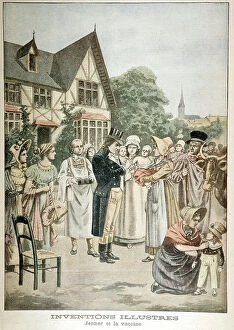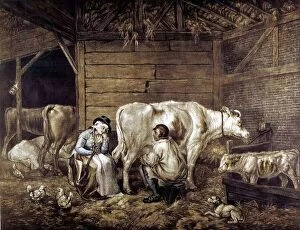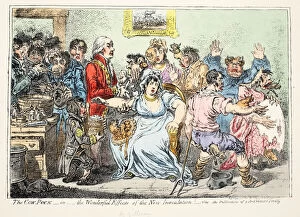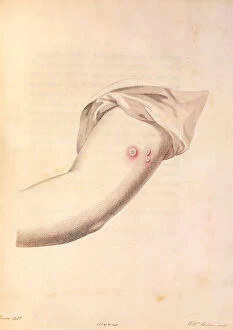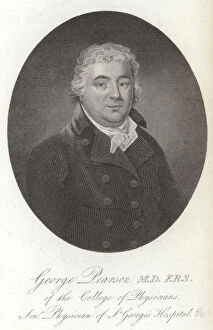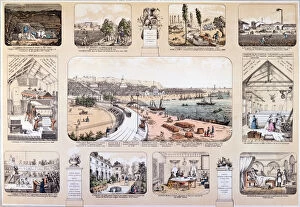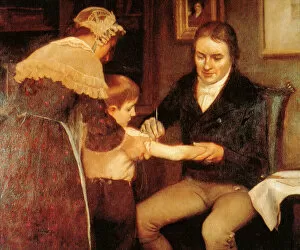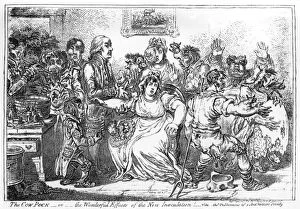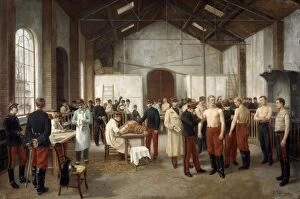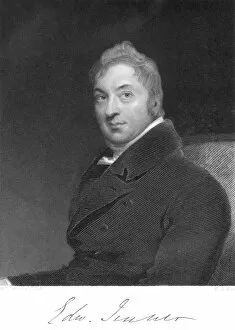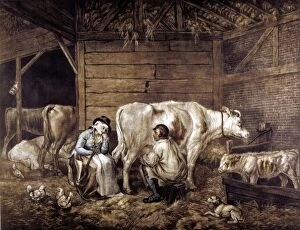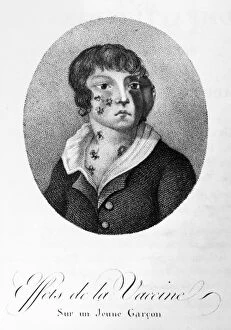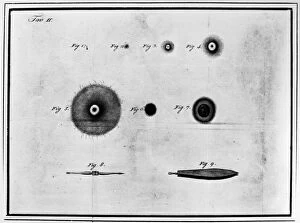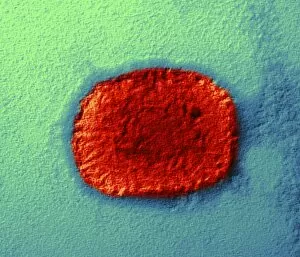Cowpox Collection
"Cowpox: The Revolutionary Breakthrough in Medicine" In the late 18th century, a British physician named Dr
All Professionally Made to Order for Quick Shipping
"Cowpox: The Revolutionary Breakthrough in Medicine" In the late 18th century, a British physician named Dr. Edward Jenner made a groundbreaking discovery that would change the course of medical history forever. Inspired by his observations of milkmaids who seemed immune to smallpox, he embarked on a mission to find a solution to this deadly disease. Jenner's journey began with an etching titled "The Cow-Pock, " created by James Gillray in 1802. This satirical artwork depicted Jenner and his vaccination efforts, shedding light on the skepticism surrounding his methods at the time. One iconic image captured Dr. Jenner collecting cowpox vesicles from the hand of a dairymaid, intending to use them for his first-ever vaccination on May 14th, 1796. This engraving from the 19th century showcases the pivotal moment when young boy received protection against smallpox. "The Cowshed, " another mezzotint after George Morland's work, vividly portrays daily life on a farm where cows were milked into buckets while waiting patiently for their turn was a milkmaid holding yoke used for carrying those buckets, and is within these humble surroundings that Jenner found inspiration and evidence supporting his theory. Cartoons like "The Cow Pock" further popularized Jenner's work and brought attention to its potential benefits. They served as both entertainment and education tools during an era when scientific advancements were not widely understood or accepted. Plaques depicting "The Origin of Vaccination" emerged in the late 18th century as tangible symbols commemorating this monumental breakthrough in medicine. Glazed ceramic pieces showcased scenes from Dr. Jenner's experiments with cowpox and highlighted how it paved the way for future vaccinations. Fast forward to Paris around c1900; we witness infants being vaccinated at Institut de la Vaccine through watercolor paintings on paper - capturing moments that solidified the widespread adoption of this life-saving practice.

